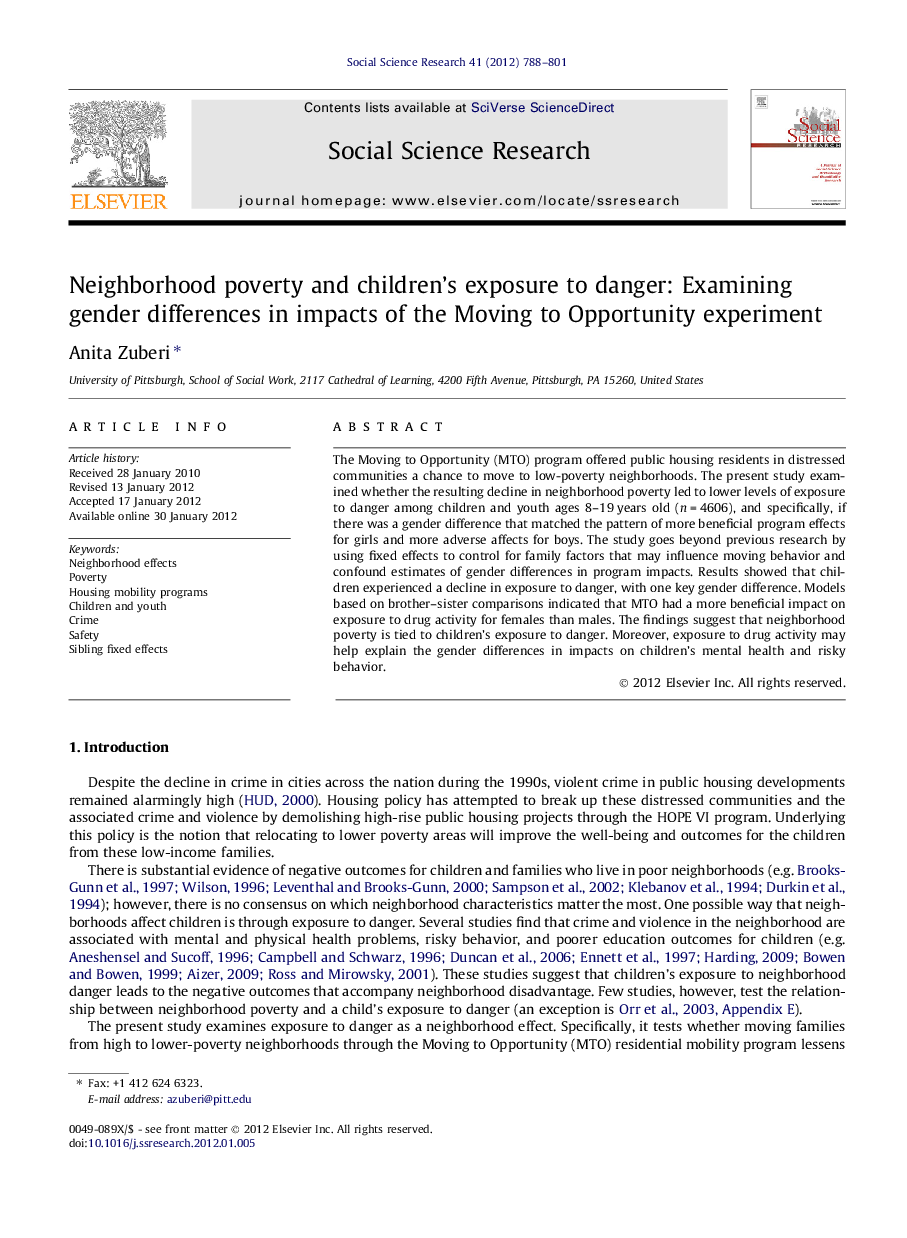| Article ID | Journal | Published Year | Pages | File Type |
|---|---|---|---|---|
| 955874 | Social Science Research | 2012 | 14 Pages |
The Moving to Opportunity (MTO) program offered public housing residents in distressed communities a chance to move to low-poverty neighborhoods. The present study examined whether the resulting decline in neighborhood poverty led to lower levels of exposure to danger among children and youth ages 8–19 years old (n = 4606), and specifically, if there was a gender difference that matched the pattern of more beneficial program effects for girls and more adverse affects for boys. The study goes beyond previous research by using fixed effects to control for family factors that may influence moving behavior and confound estimates of gender differences in program impacts. Results showed that children experienced a decline in exposure to danger, with one key gender difference. Models based on brother–sister comparisons indicated that MTO had a more beneficial impact on exposure to drug activity for females than males. The findings suggest that neighborhood poverty is tied to children’s exposure to danger. Moreover, exposure to drug activity may help explain the gender differences in impacts on children’s mental health and risky behavior.
► Declines in neighborhood poverty led to declines in children’s exposure to danger. ► Gender differences are tested, accounting for family influences with fixed effects. ► Results show a gender difference in program impacts on exposure to drug activity. ► Girls report significant declines in exposure to drugs, while boys did not. ► This matches the overall pattern of more beneficial MTO impacts on girls than boys.
